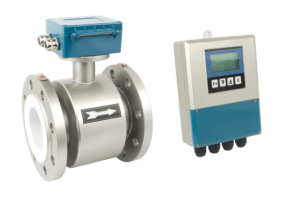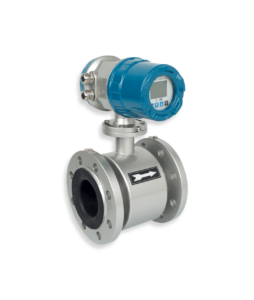This type of fault appears during the initial installation and commissioning of the electromagnetic flowmeter, but once the fault is improved and eliminated, it will generally not reappear under the same conditions in the future. Common failures during the commissioning period mainly include three reasons: improper installation, environmental interference, and fluid characteristics.

- The piping system and installation etc. The fault is usually caused by the incorrect installation position of the electromagnetic flow sensor. The common one is to install the flow sensor at the high point of the pipe network where the trapped gas is easy to accumulate; there is no backpressure after the flow sensor, and the liquid is directly discharged into the atmosphere, resulting in a non-full measuring tube. A pipe installed on a vertical pipeline flowing from top to bottom, there may be reasons such as empty.
- Environmental aspects Mainly caused by pipeline stray current interference and space electromagnetic wave interference. Large motor magnetic field interference, etc. Pipeline stray current interference usually takes good separate grounding protection to obtain a satisfactory measurement, but if there is a strong stray current in the pipeline (such as the pipeline in the electrolysis workshop), it may be overcome, and measures must be taken to insulate the flow sensor from the pipeline. Space electromagnetic wave interference is generally introduced through signal cables. Usually, single-layer or multi-layer shielding is used for protection, but it has also been encountered that shielding protection cannot be overcome.
- Fluid aspect Liquid containing evenly distributed small bubbles usually does not affect the normal measurement, but when the measured volume flow is the sum of both liquid and gas, the output signal will fluctuate due to the increase of bubbles. If the bubbles are large enough to flow through the electrode and cover the entire electrode surface, The electrode signal loop is disconnected instantaneously, and the output signal will have greater fluctuations.
The low-frequency (50/16 ~ 50/6Hz) rectangular wave magnetic-assisted electromagnetic flowmeter will produce slurry noise when the solid content in the liquid exceeds a certain content, and the output signal will also fluctuate to a certain extent.

When two or more liquids are used in the pipeline mixing process, if the conductivity of the two liquids (or the potential between each and the electrode) is different, they enter the flow sensor for flow measurement before the mixing is uniform, and the output signal will also fluctuate.
Poor selection of the electrode material and the measured medium, chemical effects such as passivation or oxidation, the formation of an insulating film on the electrode surface, electrochemistry and polarization phenomena, etc., will influence the normal measurement.
